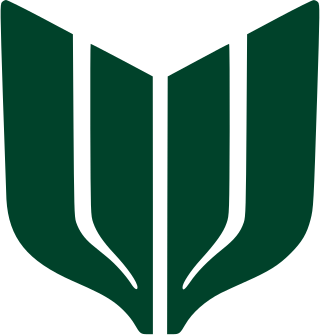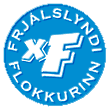
The Centre Party, officially the Centre Party of Finland, is an agrarian political party in Finland.

The Progressive Party is an agrarian political party in Iceland.

The Liberal Party was a liberal political party in Iceland. Its main issue was fisheries policy and it drew its main support from coastal villages.
This article gives information on liberalism worldwide. It is an overview of parties that adhere to some form of liberalism and is therefore a list of liberal parties around the world.
This article gives an overview of liberalism and centrism in Finland. It is limited to liberal and centrist parties with substantial support, mainly proved by having had a representation in parliament. The sign ⇒ means a reference to another party in that scheme. For inclusion in this scheme it is not necessary so that parties labeled themselves as a liberal party.
Japanese liberalism(自由主義 or リベラリズム) formed in the nineteenth century as a reaction against traditional society. In the twentieth century 'liberal' (自由) gradually became a synonym for conservative, and today the main conservative party in the country is named Liberal Democratic Party. The defunct Democratic Party (Minshuto) was considered in part a centrist-liberal party, as are most parties which derived from it. The liberal character of the Liberal League is disputed, as it is also considered to be conservative by some. This article is limited to liberal (リベラル) parties with substantial support, proved by having had representation in parliament. The sign ⇒ means a reference to another party in that scheme. For inclusion in this scheme it isn't necessary that parties labelled themselves "liberal".
This article gives an overview of liberalism and radicalism in Bulgaria. It is limited to liberal and radical parties with substantial support, mainly proved by having had a representation in parliament. The sign ⇒ denotes another party in that scheme. For inclusion in this scheme it is not necessary that parties label themselves as a liberal party.
This article gives an overview of liberalism in the Czech lands. It is limited to liberal parties with substantial support, mainly proved by having had a representation in parliament. The sign ⇒ denotes another party in that scheme. For inclusion in this scheme it is not necessary that parties label themselves as a liberal party.
This article gives an overview of liberalism and radicalism in Hungary. It is limited to liberal and radical parties with substantial support, mainly proved by having had a representation in parliament. The sign ⇒ denotes another party in that scheme. For inclusion in this scheme it is not necessary that parties labeled themselves as a liberal party.
This article gives an overview of liberalism and centrism in Estonia. It is limited to liberal and centrist parties with substantial support, mainly proved by having had a representation in parliament. The sign ⇒ denotes another party in that scheme. For inclusion in this scheme it is not necessary that the party has labeled itself as a liberal party.
This article gives an overview of liberalism in Lithuania. Liberalism was a major force in Lithuania since 1900. Next to the urban citizens, agrarian liberal parties became active. It is limited to liberal parties with substantial support, mainly proved by having had a representation in parliament. The sign ⇒ denotes another party in that scheme. For inclusion in this scheme it isn't necessary so that parties labeled themselves as a liberal party.
Since the beginning of liberalism in Portugal in the 19th century, several parties have, by gaining representation in parliament, continued the liberal ideology in contemporary Portuguese politics. But after the initial fervor of the Liberal Revolution of 1820 and the outcome of the Liberal Wars (1828–1834) during the 19th century, liberalism was relegated to a secondary role in Portuguese politics and government and even outlawed for periods of time. The first fully-fledged liberal party founded as such to have a seat in the Portuguese Parliament since the end of the First Portuguese Republic (1910–1926), was the Liberal Initiative, in 2019.
This article gives an overview of liberalism and radicalism in Spain. It is limited to liberal and radical parties with substantial support, mainly proved by having been represented in parliament. The sign ⇒ denotes another party in that scheme. For inclusion in this scheme it is not necessary that parties label themselves as a liberal or radical party.
Liberalism in Serbia is limited to liberal parties with substantial support, mainly proved by having had a representation in parliament. The sign ⇒ denotes another party in that scheme. For inclusion in this scheme it is not necessary so that parties labeled themselves as a liberal party.
This article gives an overview of liberal parties in Brazil. It is limited to liberal parties with substantial support, mainly proved by having had a representation in parliament. The sign ⇒ means a reference to another party in that scheme. For inclusion in this scheme it isn't necessary so that parties labeled themselves as a liberal party.
The German Progress Party was the first modern political party in Germany, founded by liberal members of the Prussian House of Representatives in 1861 in opposition to Minister President Otto von Bismarck.

The Liberal Union was a conservative liberal and progressive liberal political party in the Netherlands. A major party in its time, the Liberals were one of the historic predecessors of the Liberal State Party, and therefore of the People's Party for Freedom and Democracy.
The Liberal Party was a short-lived political party in Iceland in the late 1920s.

The Independence Party was a political party in Iceland between 1907 and 1927. Along with the Home Rule Party, it was one of the dominant parties in the country during the early 20th century.





